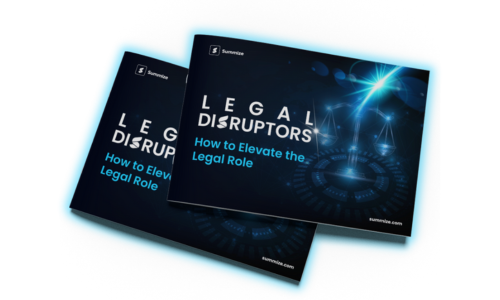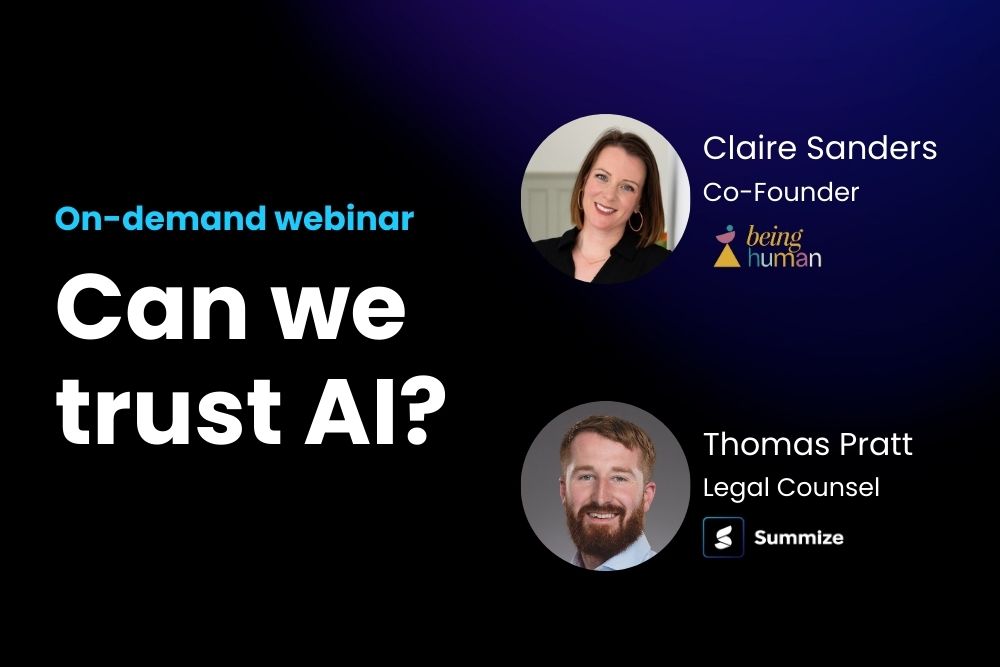Securing cross-departmental CLM buy-in from your stakeholders
CLM is a business-wide tool, but who are your stakeholders? This article will help you identify your stakeholders and how to secure their buy-in successfully.
May 17, 2023
November 25, 2025
Contracts are used for hundreds of business transactions. From Sales to IT, most departments work with contracts, and every day, they will perform their duties against some form of agreement. And as they span multiple departments, few people wouldn’t want shorter, simpler contract processes to make the whole system more streamlined!
Simplifying and accelerating contract lifecycles with technology makes a big difference and dramatically improves efficiency across the wider business. Sales teams end up with shorter deal cycles, while legal efficiently mitigate risk.
But for the technology rollout to begin, you must first win the support of multiple colleagues. Without their cross-departmental support, there is no business case, and your tech solution must be seen as a business-wide benefit and not just one for the legal team. This guide will help you identify the key stakeholders' roles and specific needs when buying the best contract lifecycle management (CLM) solution and how to get them on board.
Identify your stakeholders
Legal teams have been left behind in the digital transformation race for far too long. But it can be difficult to get a technology authorized if the wider business can’t see the benefit.
By getting your colleagues on board early, you have a higher chance of the project being signed off because:
- You will have a more robust business case and can demonstrate business-wide improvements and cost reductions from its implementation.
- You can share the project responsibilities of the onboarding and roll-out process, ensuring maximum user adoption and ROI.
- Every business is structured differently, but we have highlighted the most common stakeholders you should look to include in your CLM selection and rollout processes.
The end-users
One of the most important stakeholders is the end user. Ideally, you need their buy-in from the offset, as they will use it daily. Consult them on the solutions you are considering and get their feedback to ensure it will be adopted. Does it fit their use case? Will it require lots of training, or can you leverage an integration?
The budget holder
Most commonly a finance leader in most organizations or the CEO in smaller businesses, the budget holder will be responsible for monitoring and controlling the company-wide budget, especially in challenging economic times.
Sometimes finance teams are seen as a blocker by the rest of the business, as it may take some time to get their approval. But it’s crucial to get these colleagues on your side. They also work with contracts, so educate them on the benefits of a CLM, including the ROI, increased productivity, improved reporting, and analytics.
The decision-maker
Every project will have a lead, and they are often the decision-maker when selecting and completing a purchase. In this case, it could be you!
Some businesses may decide to have multiple decision-makers, including individuals from each department. In this case, you should educate them on the benefits that a CLM solution will bring them and their department before arranging a call with a vendor.
The procurement process
So, you know you have a problem that could be solved with a CLM solution, you’ve successfully identified a list of vendors that will bring company-wide benefits, and you’ve identified your stakeholders. But what next? And what other departments need to be involved and why?
Finance
Finance is one of the most crucial stakeholders when approving the spending for a company-wide software solution. Be sure to involve them in financial discussions with your chosen vendor. Numbers are their forte, so they will want to see the project’s ROI versus the cost of doing nothing.
Make sure that you highlight the importance of having a central contract repository. Finance teams need to monitor spend and compliance across each department, and they need a solution that makes the data inside these contracts valuable and useable.
Sales
Over 80% of B2B Sales teams are processing 500+ contracts each month, which makes sales teams one of the biggest beneficiaries of implementing a CLM solution.
They will be a super user of the product and can be fantastic internal champions, so make sure you involve them as early as possible.
They work in a fast-paced environment where time is money, so tech that works with their existing tools accelerates processes and makes their job more accessible at the month’s end will get their backing. Research by EY discovered that 59% of Business Development professionals had lost opportunities due to inefficiencies in the contracting process, so it’s a priority that the solution you choose works for them and your legal team.
IT
Security is the IT team's priority, so the earlier you consult with them, the better! Bring your IT team up to speed as soon as you have identified any potential tech solutions.
They may request security information and whitepapers, so make sure you collect these from your vendor as soon as possible. The more involved in the process the IT team are, the smoother the project will be.
Procurement
Procurement teams play two roles in purchasing a CLM. Firstly, the contracting process for procurement teams can often become a hindrance, causing delays across the wider business. So, involve them from the get-go. Highlight the benefits of implementing AI-powered reviews and reminders across their contracts.
Secondly, bring them in for negotiations with the vendor. It’s their job to make purchases on behalf of the company, and they bring fresh eyes to the process. They may spot problems that you haven’t thought of!
Next - meet the vendors!
You’re at the final stage of the buying process. Once you have finished your research and got stakeholder buy-in, it’s time to schedule the demos with the CLM vendors. A demo will give you a better understanding of how the product works and whether it fits your business well. It’s also the opportunity for you and your team to ask any questions about how the solution can be utilized to solve your specific challenges.
The selection process may involve sending out an RFP or RFI to a few chosen vendors, stating your requirements and budget to determine the suppliers that make the most sense for your business. If you aren't sure of your requirements, consult a CLM purchasing checklist to help you identify which CLM features and vendor support is useful for your business.
At Summize, our team will always be on hand to help you with every step of the process, from your initial demo to implementation. We will guide you through each stage, helping you strengthen your unique business case for an integrated CLM by demonstrating the ROI and efficiency gains to each stakeholder and their department.
Making the purchase
Businesses often think the process is over once they purchase a CLM solution. But at Summize, we understand that it goes beyond that initial step. That’s why we’ve designed an industry-leading implementation program to ensure your new CLM tool is adopted across the business and works successfully for your team.
Our specialized Implementation Team delivers high-quality services, supported by our Customer Success department, to ensure you continue achieving value after implantation. We know every project is different, but our team will work alongside yours to design and implement a plan that meets your unique requirements.
“The Customer Success and Implementation team at Summize has been fantastic. They were incredibly supportive in our onboarding and roll-out process and are always on hand to help us ensure we see real results”.
Gemma Griffiths, Head of Operations at HCI Group
Discover even more!
Explore more about contracting and CLM in our ultimate contract guides








